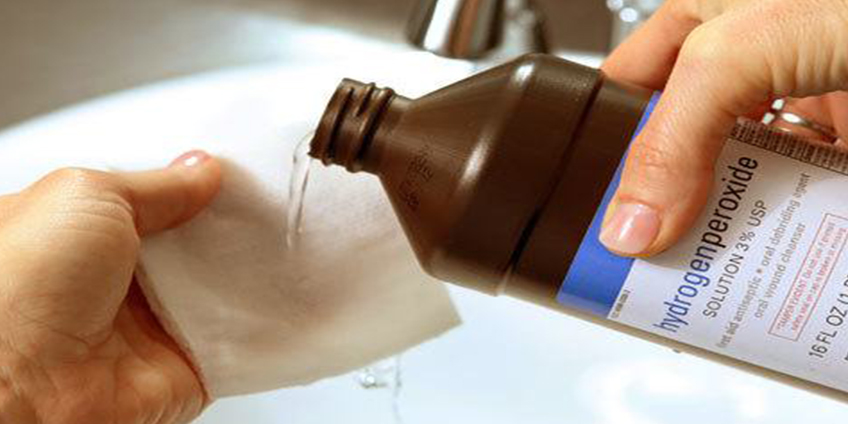Common hydrogen peroxide is great stuff with many uses ranging from cleaning wounds to working as a deodorant, and is a dirt cheap alternative which helps to avoid high priced cleaning products as well as the chemicals they contain that some environmentally and health conscious people want to eliminate from use.
- Hydrogen peroxide can be used to clean minor wounds much like any iodine solution would by applying directly to the injury and surrounding area. It is recommended not to use it more than once on the same wound as it may slow healing time.
- Hydrogen peroxide works wonderfully at rinsing off bugs, dirt, and pesticides from fruits and vegetables by adding a quarter cup to a sink full of water and letting them soak for 5-10 minutes then rinsing off the produce a second time in plain water to remove the hydrogen peroxide.
- Hydrogen peroxide mixed with dish soap at a ratio of 1:2 can make deodorant, apply to armpits and wait a half hour before rinsing it off. It is more work than commercially available products, but it does work, and comes in handy in a pinch when you’ve ran out.
- Hydrogen peroxide mixed in a spray bottle with water at a ratio of 50:50 can make cleaning countertops much easier. Just spray the mixture as any other product and wipe down as per usual to get a glistening clean and fresh countertop.
- Hydrogen peroxide can really help to clean grouting nightmare jobs. If grout in your bathroom tiles for example becomes all funky make sure its dry first and spray it down with hydrogen peroxide making sure to give it adequate time to soak in. After a few hours return to the area and use a bit of elbow grease with a toothbrush and soapy water, that grout should some out looking whiter than it has been in years.
- Hydrogen peroxide will even clean mold, in fact mold doesn’t stand a chance against hydrogen peroxide. Apply hydrogen peroxide directly to the unwanted moldy area then use some more of that elbow grease to scrub it clean, if worried about mold returning simply give the area another extra spray afterwards. This is generally a very effective method, but hydrogen peroxide may discolor some paints, to be safe test in an inconspicuous area first, but to be honest it’s better to have some discoloring than mold in my books.
These suggestions utilize common household hydrogen peroxide which typically comes in a brown bottle and can be picked up at any drugstore, usually at 3% dilution which is quite safe, but best to avoid consumption as it can upset stomach and may cause coughing up of frothy bubbles. Also avoid contact with eyes, and some people can experience skin irritation even at these low concentrations, if it occurs it might be best to avoid using hydrogen peroxide. 3% dilution is typically safe, but hydrogen peroxide does come in stronger concentrations and should only be used as intended and never ingested, these higher concentrations can cause severe internal burns and will irritate eyes and skin. Hydrogen peroxide has a wide variety of many uses! These are just a few common uses that make having it around in the home worthwhile!
Looking for more personalized tips on how to keep healthy? Contact me for a consultation.




